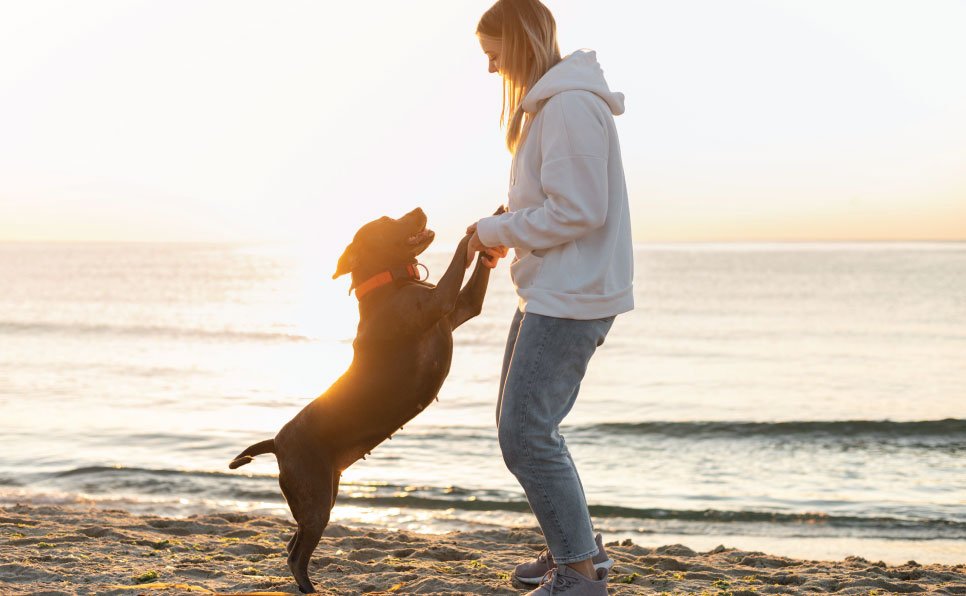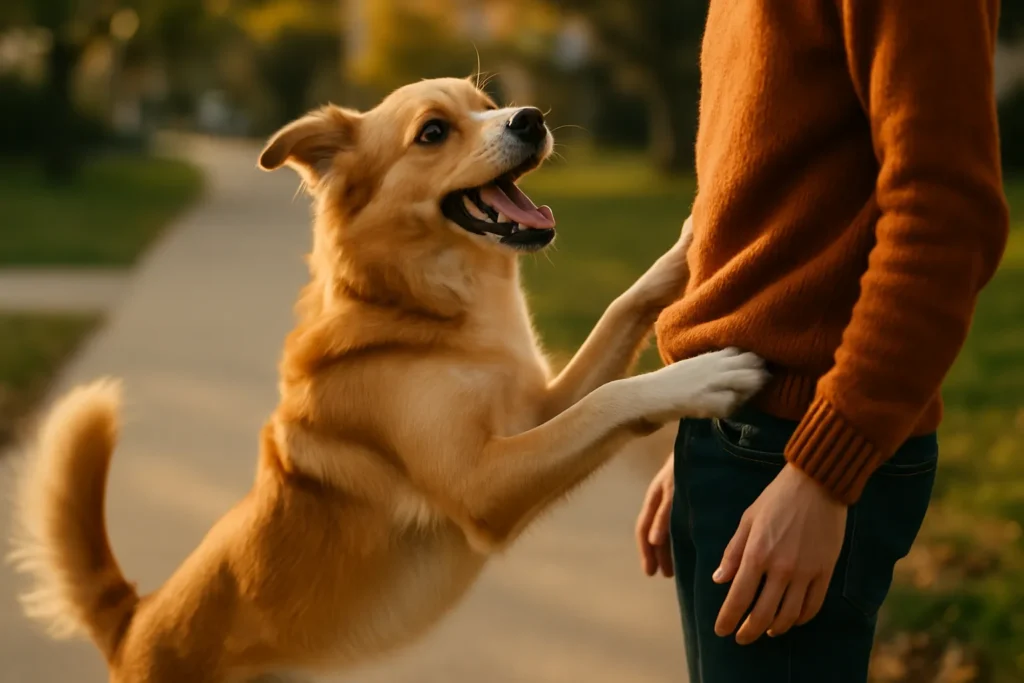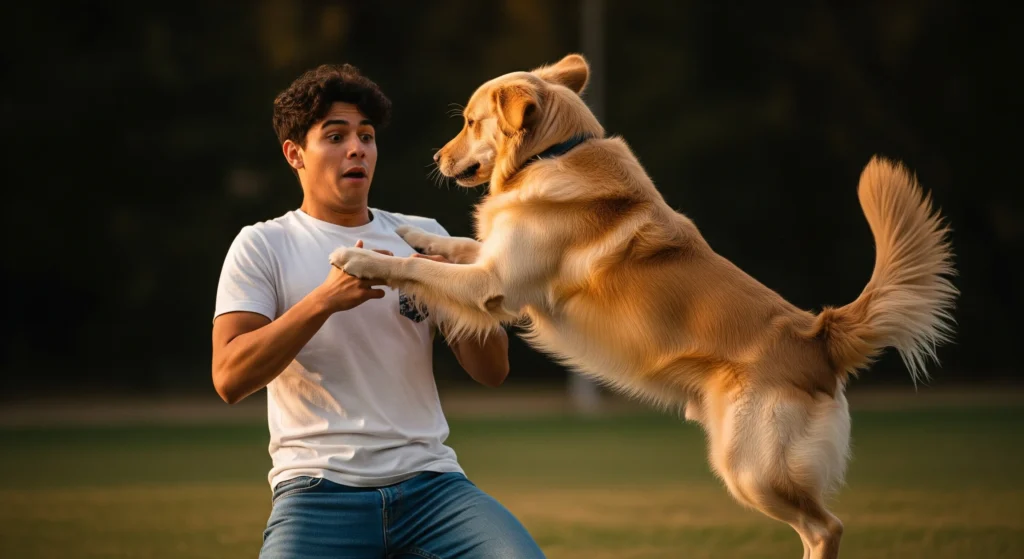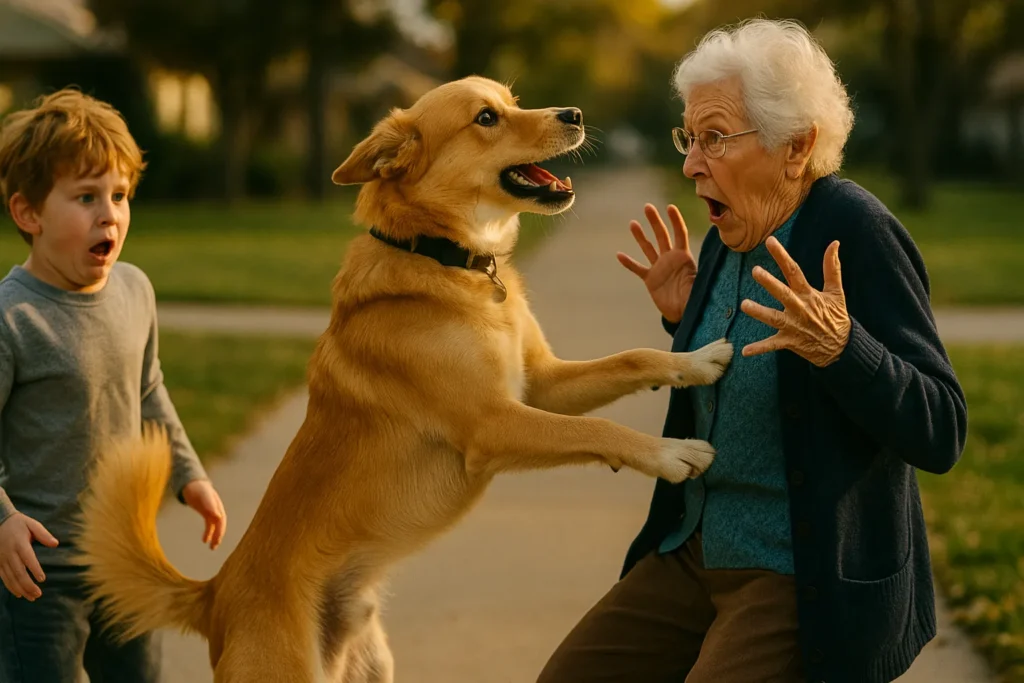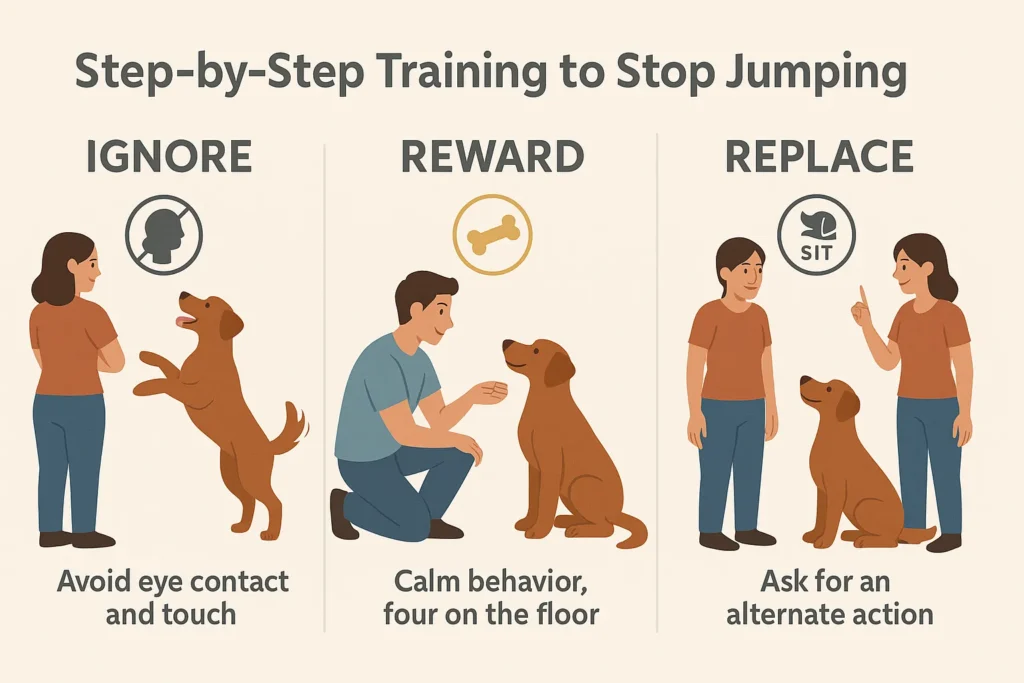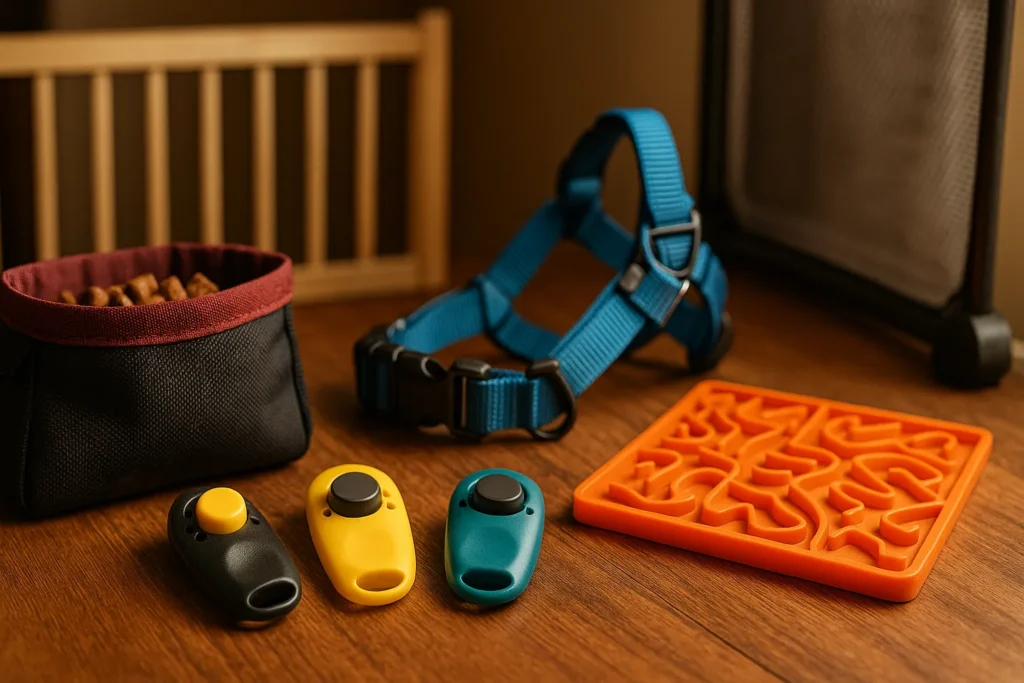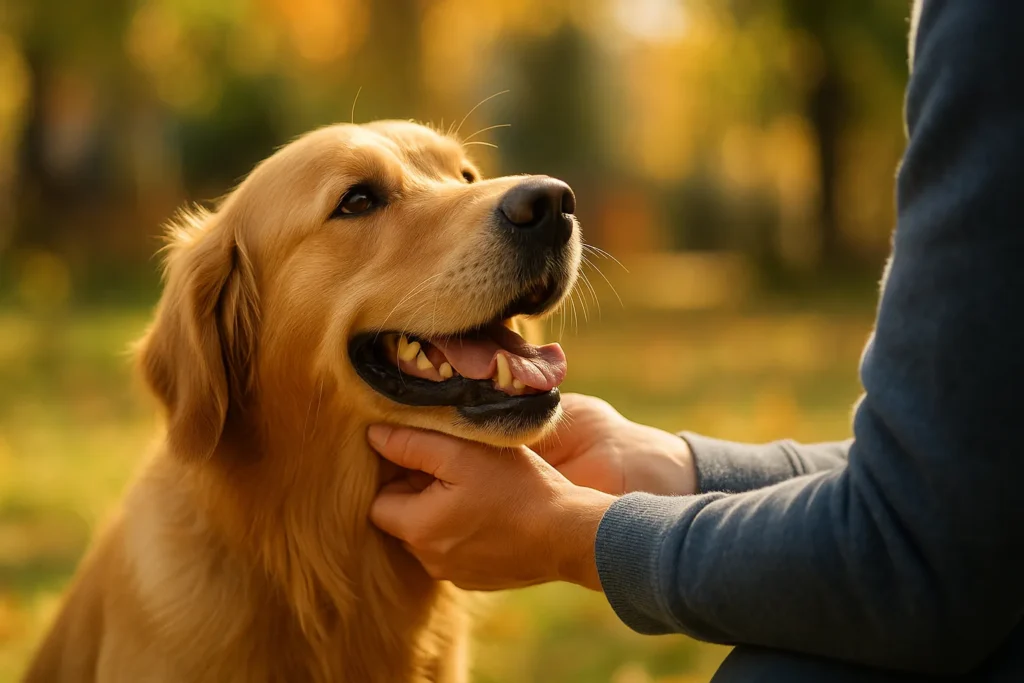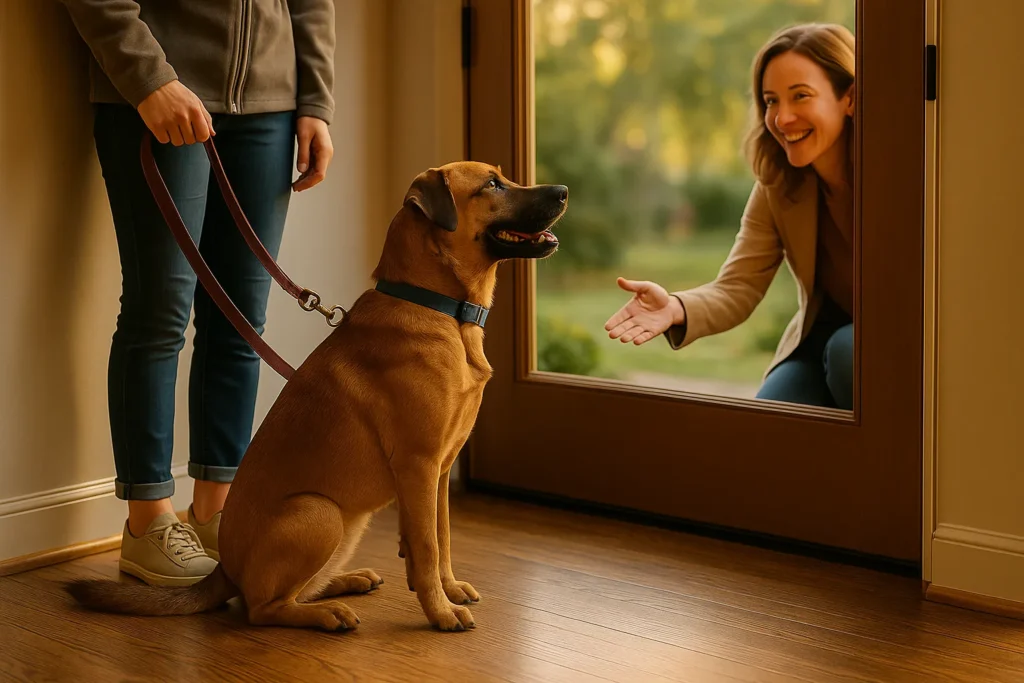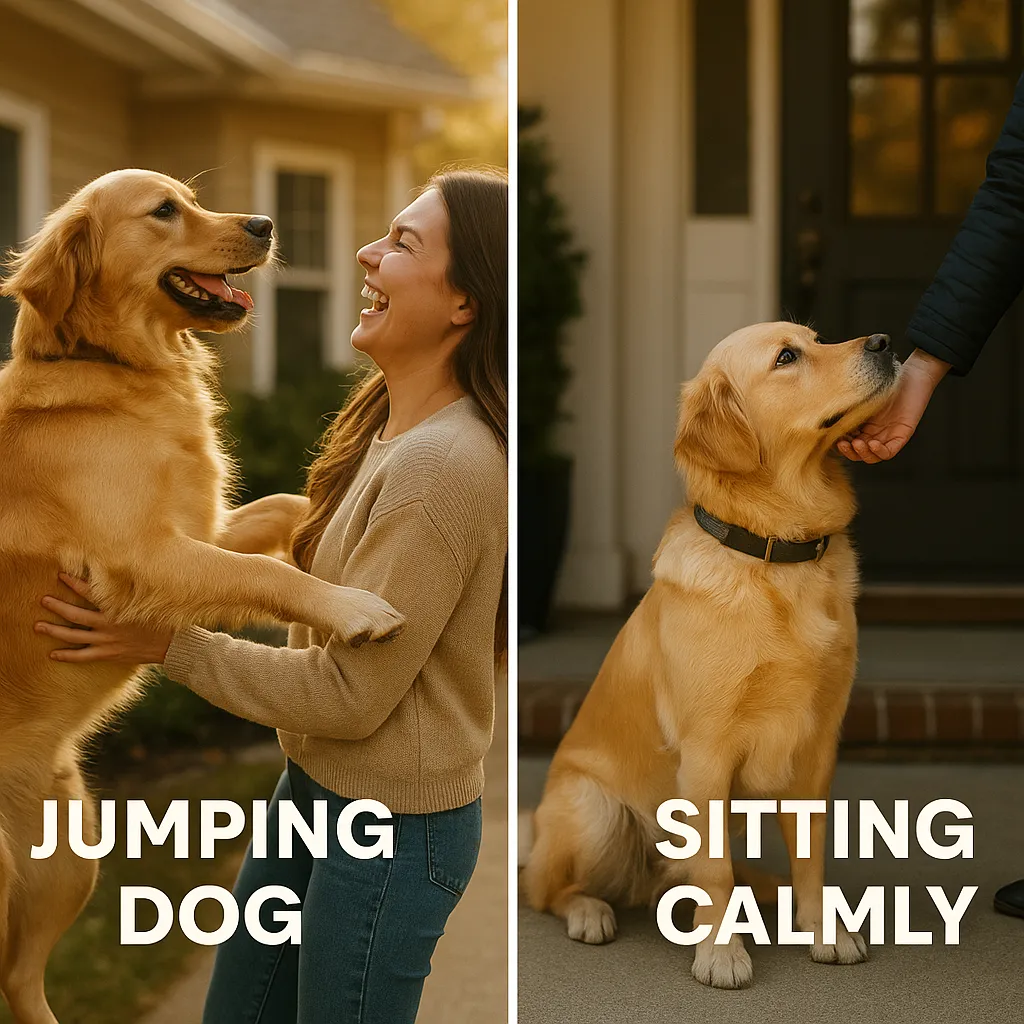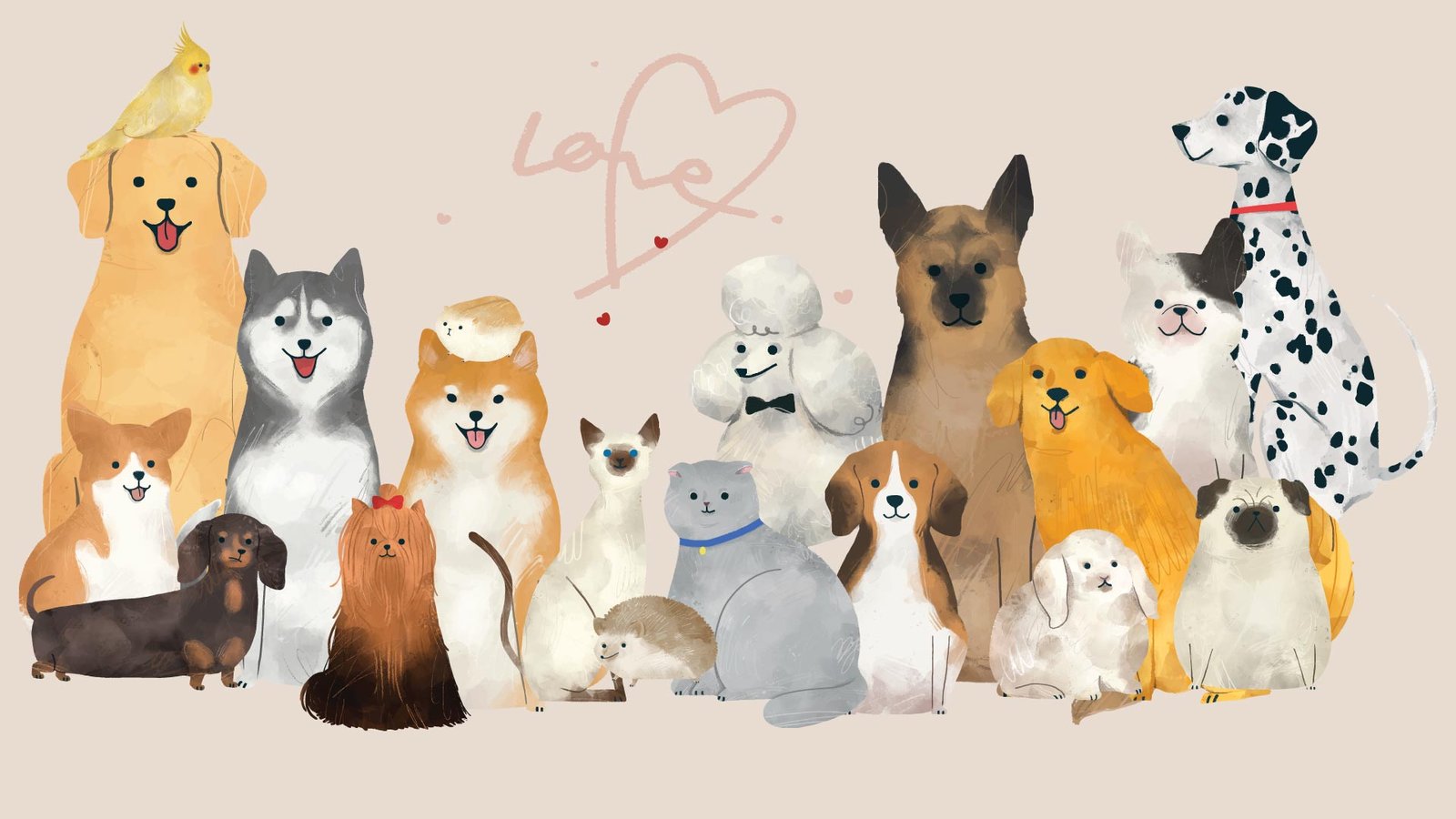Does your dog leap like a kangaroo every time someone rings the doorbell? You’re not alone. Many pups get so excited to see new faces that they can’t resist jumping. It might seem cute at first, until Grandma nearly gets knocked over or your friend ends up wearing paw prints. Here’s the thing: jumping is totally normal canine behavior, but it can also be stressful and even dangerous if not addressed properly. With a few loving, consistent steps, you can teach your dog to greet guests calmly (tail wags still included!).
Why Dogs Jump on People
You ever notice how puppies climb all over each other like it’s some kind of game? That’s not just roughhousing, it’s how they say “hi!” Dogs greet each other face to face, and since we humans are a bit taller than their siblings, they jump up to meet us on our level. Sweet, right? But it becomes a real issue when your 70-pound lab decides to say hello by launching himself at Aunt Judy.
When my dog, Lazy, was a pup, she’d do this adorable hop every time I came home. I thought it was love, well, it was love, but I didn’t realize I was teaching her that jumping = affection. Fast-forward a year, and she’s greeting my guests by knocking them into the coat rack. Not exactly the warm welcome I had in mind.
At its core, jumping is excitement mixed with a sprinkle of impulse control issues. Dogs don’t have that built-in “wait your turn” button. They feel the urge to connect, fast, physical, now! That lack of patience, especially in young or high-energy dogs, makes them react before they think.
Then there’s the reward factor. If every time your pup jumps up, they get a pat, a smile, or even a “No, down!” guess what? They’re still getting attention. And for a dog, attention is gold. They don’t always care if it’s good or bad, as long as you’re looking at them, touching them, or saying something. That’s why yelling or pushing them down often backfires. You’re actually reinforcing the behavior by reacting.
Some dogs also jump because they’re nervous. Yep, it’s not always joy, it can be anxiety. Like a “Please like me! I don’t know what to do!” kind of energy. When Lazy met new people she wasn’t sure about, she’d jump higher and wag harder, trying to break the tension. Overcompensation mode: activated.
So whether your dog’s a love bug, a nervous Nellie, or just high on life, jumping is usually a blend of learned behavior and emotion overload. The good news? You can totally guide them toward calmer hellos. It just takes a little awareness, and consistency.
The Problems with Letting It Continue
I’ll be honest, at first, I thought Lazy’s jumping was just her quirky way of showing love. I brushed it off. Guests would laugh it off too… until they didn’t. One day, she nearly toppled my niece over, tiny thing, barely four years old, and I saw the look of fear flash in her eyes. That was my wake-up call. What I thought was harmless behavior could actually hurt someone.
Jumping may seem playful, but it can be risky, especially around kids or older folks. Dogs don’t know their size or strength, especially when they’re caught up in the thrill of a new face walking through the door. A quick jump can knock someone off balance, or worse, lead to a fall. That’s not a memory anyone wants to associate with your dog, especially not your loved ones.
And the longer you let the jumping continue, the more it becomes second nature to your dog. It reinforces that hyper vibe. You might notice your pup gets even more revved up every time someone visits, bouncing around like a wind-up toy. That kind of energy, left unchecked, builds into a habit that’s really tough to break later. Plus, it’s exhausting, for you and your dog.
Taking your dog out in public gets a whole lot harder too. I remember walking Lazy through the farmers market, leash tight, hands full, and she jumped at a woman with a toddler. The woman gave me that look. You know the one: annoyed, a little scared, maybe even angry. I felt embarrassed, and Lazy sensed it. Outings like that should be joyful, but when jumping becomes routine, it turns fun events into stressful minefields.
And not everyone’s a dog person (I know, weird right?). Jumping can scare people, especially those with past trauma or just a natural discomfort around animals. Your dog’s excited leap might feel like an attack to someone who doesn’t speak “dog.” It’s not fair to your pup either, they’re just trying to say hi, but end up causing fear instead of joy.
So letting jumping slide doesn’t just create chaos, it can damage trust, safety, and your relationship with your dog and the people around you. The kindest thing you can do? Show your pup there’s a better way to say “hello.” It keeps everyone safe, calm, and ready to love your dog back the way they deserve.
Step-by-Step Training to Stop Jumping
Alright, so you’ve got a jumper on your hands, don’t worry, you’re not alone! The key to turning those flying greetings into polite paw-on-the-floor hellos is simple: consistency, patience, and a little bit of strategy.
- Step one? Ignore the jump. And yes, I know that sounds weird at first. But trust me, when Lazy used to bounce up to greet me, the moment I stopped reacting, no touch, no eye contact, no words, she got the message loud and clear. I’d literally turn my back, cross my arms, and wait. Dogs crave attention, so when jumping doesn’t get it anymore, it starts to lose its magic.
- Next, reward calm behavior. As soon as all four paws hit the ground, boom, instant praise! “Good girl, Lazy!” Treat, pet, eye contact. The trick is to catch the moment they’re calm, even if it’s just for a second. Mark that behavior and make it the star of the show. What gets rewarded gets repeated, right?
- Then, train a replacement behavior. Jumping is often your dog’s way of saying “Hi, I’m here! Love me!” So give them another way to do that. For Lazy, we practiced “sit” at the door. It took time, but now when she hears the doorbell, she runs to her “place” mat and waits, tail wagging, of course. Teaching a new action gives their energy a job to do. And when your dog is busy focusing on a sit or stay, they can’t be mid-air!
- The biggie here is consistency. Everyone in your house (and I mean everyone) has to be on the same page. One person letting the dog jump “just this once” totally resets the progress. I had to coach my boyfriend, my mom, even my neighbor. We had a code word, “pause”, to remind each other not to engage if Lazy jumped.
- Finally, keep it fun and short. Training isn’t a bootcamp. Just a few minutes a day, lots of praise, and don’t worry about being perfect. Use treats your dog loves, tiny cheese bits were Lazy’s fave, and celebrate small wins. One paw on the ground longer than usual? Party! It builds their confidence and yours.
Stopping jumping isn’t about scolding, it’s about guiding. Your dog wants to connect with you. Teach them that calm, grounded behavior gets them what they want, and you’ll both be happier for it.
Tools That Can Help (Gently!)
Sometimes all it takes to shift a dog’s behavior is the right tool in the right moment, kind of like parenting with snacks and a stroller! When Lazy was deep in her jumping phase, I realized that having a few gentle, effective tools on hand made all the difference. Not to punish her, never, but to guide her toward calm, confident choices.
First up: the classic clicker and treat pouch.
I used to fumble with treats in my hoodie pocket, and by the time I rewarded Lazy, the moment was gone. A clicker gives you that perfect timing, click!, and boom, your dog knows exactly what they did right. Pair that with a treat pouch clipped to your belt (hands-free FTW), and you’re training like a pro. I used it every time Lazy greeted a guest with four paws on the floor. It’s fast, clear, and super positive.
The front-clip harness.
It was another game changer. Unlike regular collars or back-clip harnesses that can actually encourage pulling, front-clip styles redirect your dog’s energy without jerking or yanking. I liked it because it gave me more control during greetings without making Lazy uncomfortable. It let us practice calm entrances without the drama of a tug-of-war at the door.
The humble baby gate or indoor leash.
Look, some dogs just can’t handle high-energy moments, like when the pizza guy shows up or five friends walk in laughing. That’s okay! Use a baby gate to create space, or clip on a leash before your guests arrive so your dog doesn’t bolt across the room. It’s not a punishment, it’s a reset button. Lazy chilled out way faster when she had a cozy space away from the front door rush.
Interactive feeding mats or slow feeders.
One tool I never expected to love? These are great if your dog gets overstimulated. Right before guests came over, I’d load a lick mat with peanut butter and pop it in the freezer. Lazy would be so focused on her tasty puzzle that she didn’t even notice the commotion. It worked wonders to keep her brain engaged and paws on the ground.
Remember, tools aren’t quick fixes, they’re part of your love toolkit. You’re not trying to stop your dog from being excited, you’re just helping them channel it in a safer, sweeter way.
Real-Life Scenarios and How to Respond
Let’s face it, real life doesn’t come with perfect conditions. Dogs don’t always jump when you’re standing there, clicker in hand and calm music playing. Nope. They jump when the doorbell rings like a gong, when a stranger leans in too fast, or when three kids come charging in screaming “DOGGYYYY!” So let’s talk about how to handle those moments, because they’re the ones that matter most.
When the doorbell rings.
That’s showtime. For many dogs, it’s like a starter pistol, excitement explodes. The trick is preparation. Before Lazy got to that level of hype, we practiced what I called “doorbell drills.” I’d ring the bell, have her on leash, and guide her to her “place” (a mat by the hallway). When she stayed calm, even for two seconds, I’d mark it with a click and a treat. Eventually, she learned that the bell wasn’t a cue to leap, it was a signal to chill. Pro tip: having treats ready before guests arrive is a game-changer.
Outside greetings on walks?
Totally different energy. Your dog’s already stimulated by smells, sights, squirrels, so when a neighbor wants to say hi, it can tip them over the edge. My rule? No greeting unless Lazy is sitting. We’d stop, I’d ask for “sit,” and only then could she say hi. If she jumped, we’d move on. No scolding, just “oops, no hello this time.” She figured it out pretty quick: manners = friends.
Before guests even arrive.
I burn some of that crazy energy. I’m not saying run a marathon, but a 15-minute game of fetch or a sniff walk works wonders. If Lazy was amped up from the start, it was always harder to manage her at the door. Think of it like letting the steam out of a pressure cooker, you’re helping them reset to a calmer state before they get overstimulated.
And then there’s kids.
Oh man. High voices, sudden movements, and small size? It’s like a jumping magnet. With kids, I always give them “the Lazy talk”: stand like a tree, arms crossed, wait for her to sit. And I manage Lazy on a leash or behind a gate until she settles. It keeps everyone safe and helps her learn that little humans deserve gentle hellos too.
These situations aren’t about perfection, they’re about preparation and presence. Show your dog what success looks like, and celebrate it every single time.
How to Stop Your Dog from Jumping on Guests. Frequently Asked Questions (FAQs)
It depends on your dog’s age, energy level, and how long the behavior has been reinforced. Some dogs show improvement in a few days with consistent training, while others may take weeks. Stay patient, keep sessions short and positive, and celebrate small wins!
That’s totally normal! Dogs often learn patterns around specific individuals, like jumping on the neighbor who always squeals with excitement. Make sure everyone your dog interacts with follows the same calm, consistent greeting rule: no attention unless all four paws are on the floor.
Sometimes. If your dog is overly anxious, hyper-vigilant, or reactive in addition to jumping, it might point to deeper emotional needs. In those cases, it’s worth checking in with a certified dog trainer or behaviorist to get a personalized plan.
Yes, but treats can speed up learning by providing a clear, desirable reward. If you prefer not to use food, use verbal praise, pets, or play as reinforcement. Just be sure whatever you choose is something your dog values enough to work for.
Oof, that one’s tough! Before they arrive, kindly ask them to help reinforce your training by ignoring the jumping and waiting to greet your dog until they’re calm. If someone forgets, gently step in and redirect your dog with a sit command before the greeting continues.
Try making your return home less exciting. Walk in calmly, avoid eye contact, and wait to greet your dog until they’ve settled down. You can also toss treats on the floor to redirect their energy or have them “go to place” as part of a calming routine.
Conclusion: Calm Greetings Start With You
Your dog’s jumping isn’t a failure, its just excitement that needs direction. They’re not trying to be rude. They’re trying to connect. And with the right tools, a little prep, and a whole lot of love, you can teach them a better way.
You’ve got this! By staying calm, being consistent, and using positive reinforcement, you’re not only preventing knocked-over guests, you’re building trust, confidence, and an even stronger bond with your dog. That’s the real win.
Every tail-wagging, four-paws-on-the-floor greeting is a step toward peaceful, joyful moments with the people you love. So keep going. Keep showing up. And give your pup a treat from me when they get it right.
Ready to share your progress? Drop your favorite no-jump tip or story in the comments, we’d love to hear how it’s going!

